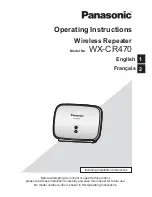
A 12/03
Repeater 820nm / 1300nm
s
Page 6 of 32
Repeater 820nm / 1300nm
A 12/03
s
Data Transfer
The logic of the two optical interfaces is positive (Light OFF in idle
state), incoming light signals are treated as active = 1 (high). For use in
systems operating with a negative logic, the 820 nm transmitter and
the 820 nm receiver can be switched over to negative logic by means of
one integrated switch each. On delivery, the converter is set to positive
logic (Light OFF in idle state).
The 1300 nm optical interface can only operate with a negative logic
(Light ON in idle state).
Connection of the FO Channel
The FO cables are connected to the corresponding FO elements. The
connector type for the 1300 nm cable is BFOC (ST) for multimode fiber
and for the 820 nm cable either FSMA for multimode fibre.
1
Operating Instructions
1.1
Scope of Application
The optical repeater is used for conversion of signals with a wavelength
of 820 nm to signals with a wavelength of 1300 nm and vice versa.
Operation is full-duplex and protocol-transparent.
With the optical repeater, transmission of data signals by multimode
fiber is possible up to a distance of (typically) 5 km.
General Data
The optical repeater has a plastic housing that can be snapped onto a
mounting rail. The 1300 nm optical interface is equipped with BFOC
connectors.
Delivery of the 820 nm/1300 nm converter:
820 nm interface with FSMA connectors:
7XV5452-0AA00
The auxiliary power supply is fed in via two terminals. Because of its
extremely wide auxiliary voltage range (DC 24 - 250 V and AC 60 - 250
V), the converter can be connected without switchover to all common
types of station batteries and AC mains voltage supplies.
The front cover has a green LED for indication of the operating voltage
status.
The status of the in5V operating voltage can be checked by
means of a potential-free relay contact that is brought out to two
terminals. An open contact means that the operating voltage is o.k.
The readiness for service of the unit is indicated by means of a potential-
free signalling contact (terminals 1,2) that can be used to communicate
the following fault conditions to a control center:
• No supply voltage
Failure of internal power supply
When a fault condition is present, the contact is closed.
Attention ! In the transmission of serial protocols like
IEC 60870-5-103, IEC61850-5-101, DIGSI, Modbus, DNP3 etc.
problems appeared in a few cases. Of the use in such
applications we dissuade therefore urgently.

































